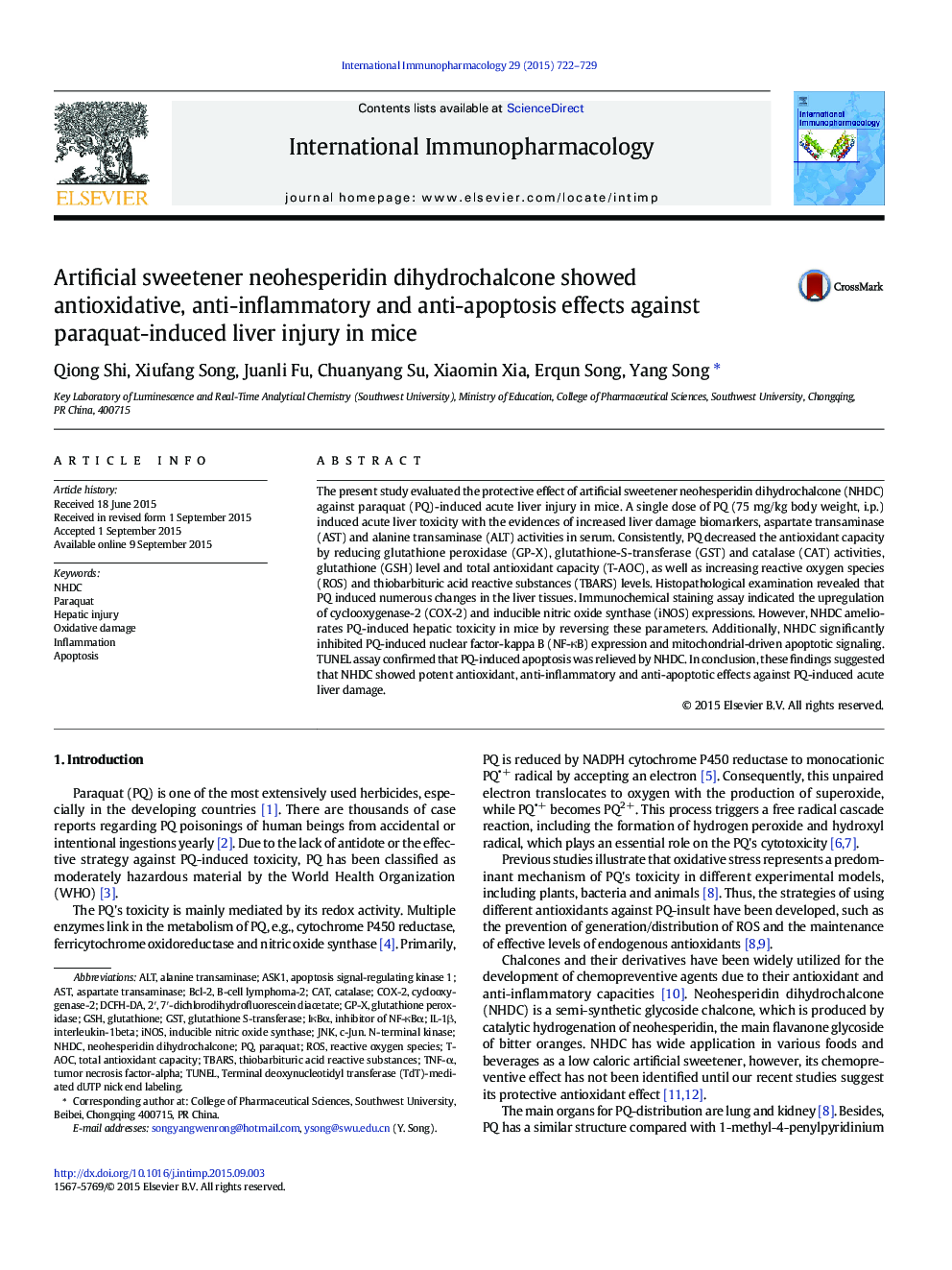| Article ID | Journal | Published Year | Pages | File Type |
|---|---|---|---|---|
| 5832268 | International Immunopharmacology | 2015 | 8 Pages |
â¢NHDC attenuates paraquat-induced acute liver injury.â¢NHDC inhibits paraquat-induced oxidative damage.â¢NHDC inhibits paraquat-induced inflammation.â¢NHDC inhibits paraquat-induced apoptosis.â¢These results implied a new application of NHDC as a hepatoprotective agent.
The present study evaluated the protective effect of artificial sweetener neohesperidin dihydrochalcone (NHDC) against paraquat (PQ)-induced acute liver injury in mice. A single dose of PQ (75 mg/kg body weight, i.p.) induced acute liver toxicity with the evidences of increased liver damage biomarkers, aspartate transaminase (AST) and alanine transaminase (ALT) activities in serum. Consistently, PQ decreased the antioxidant capacity by reducing glutathione peroxidase (GP-X), glutathione-S-transferase (GST) and catalase (CAT) activities, glutathione (GSH) level and total antioxidant capacity (T-AOC), as well as increasing reactive oxygen species (ROS) and thiobarbituric acid reactive substances (TBARS) levels. Histopathological examination revealed that PQ induced numerous changes in the liver tissues. Immunochemical staining assay indicated the upregulation of cyclooxygenase-2 (COX-2) and inducible nitric oxide synthase (iNOS) expressions. However, NHDC ameliorates PQ-induced hepatic toxicity in mice by reversing these parameters. Additionally, NHDC significantly inhibited PQ-induced nuclear factor-kappa B (NF-κB) expression and mitochondrial-driven apoptotic signaling. TUNEL assay confirmed that PQ-induced apoptosis was relieved by NHDC. In conclusion, these findings suggested that NHDC showed potent antioxidant, anti-inflammatory and anti-apoptotic effects against PQ-induced acute liver damage.
